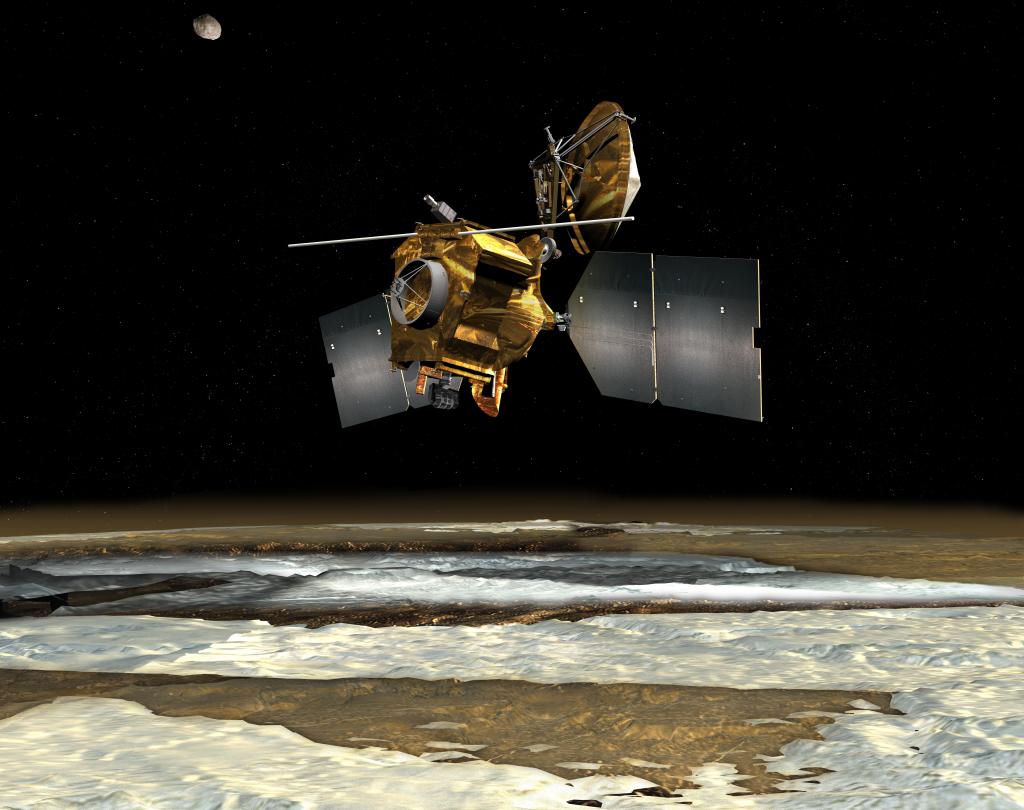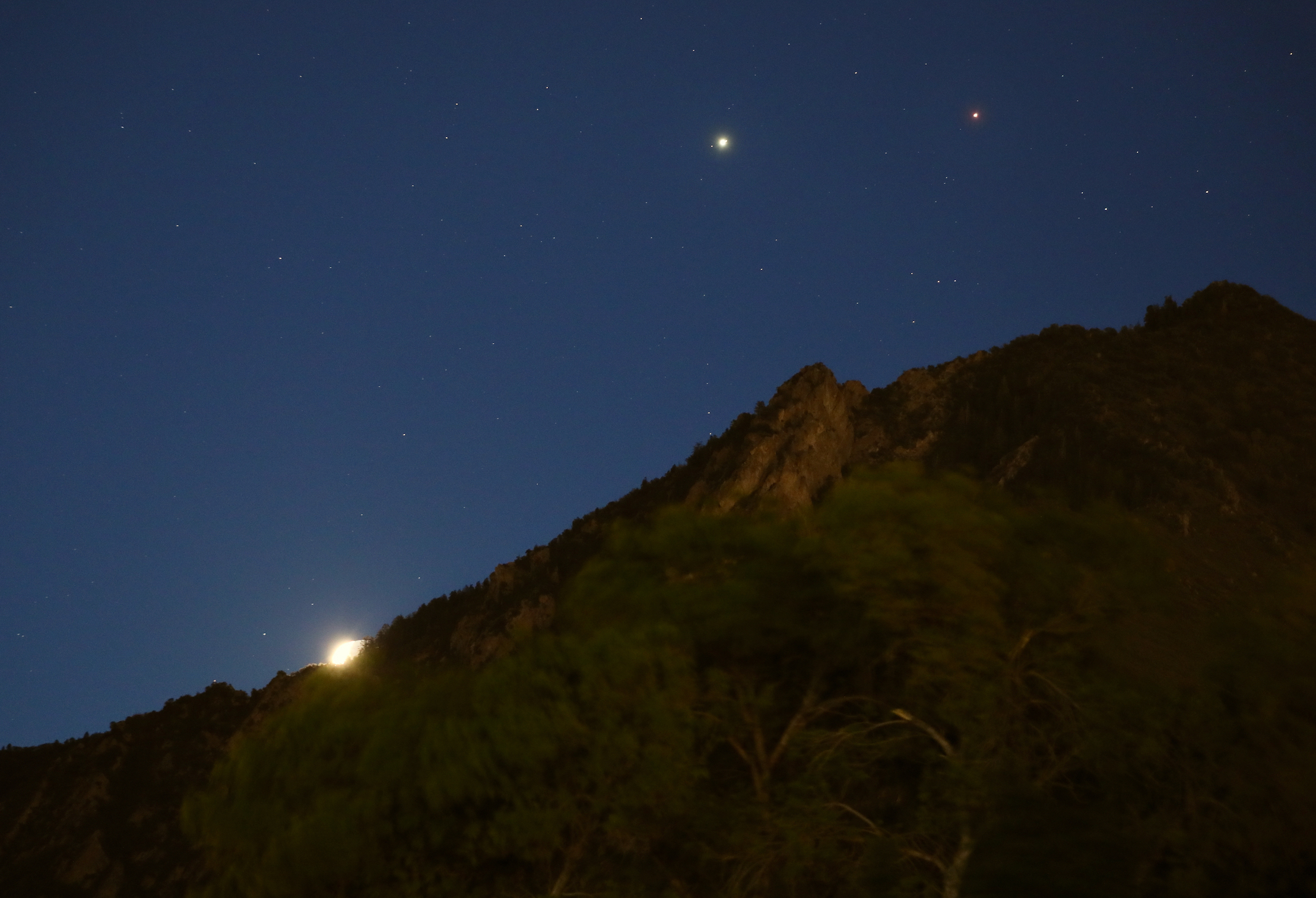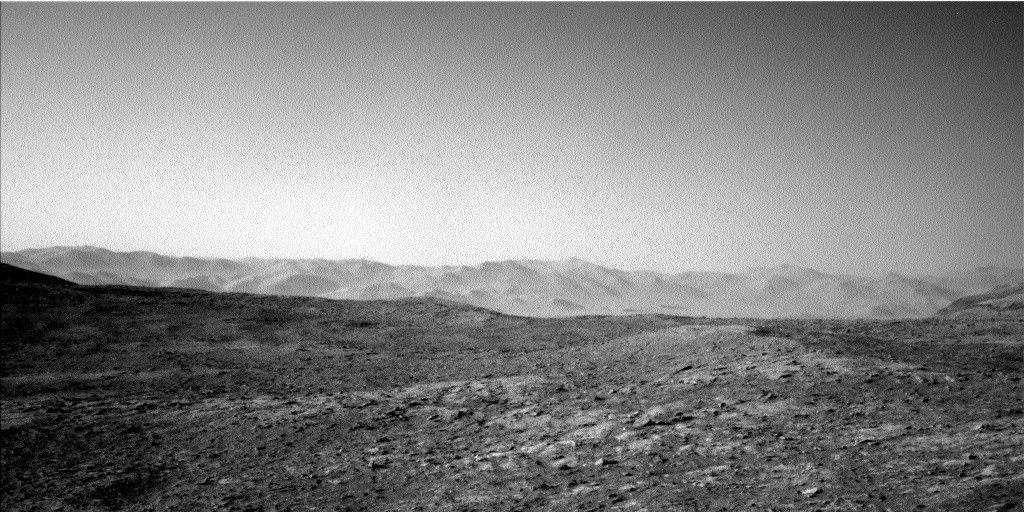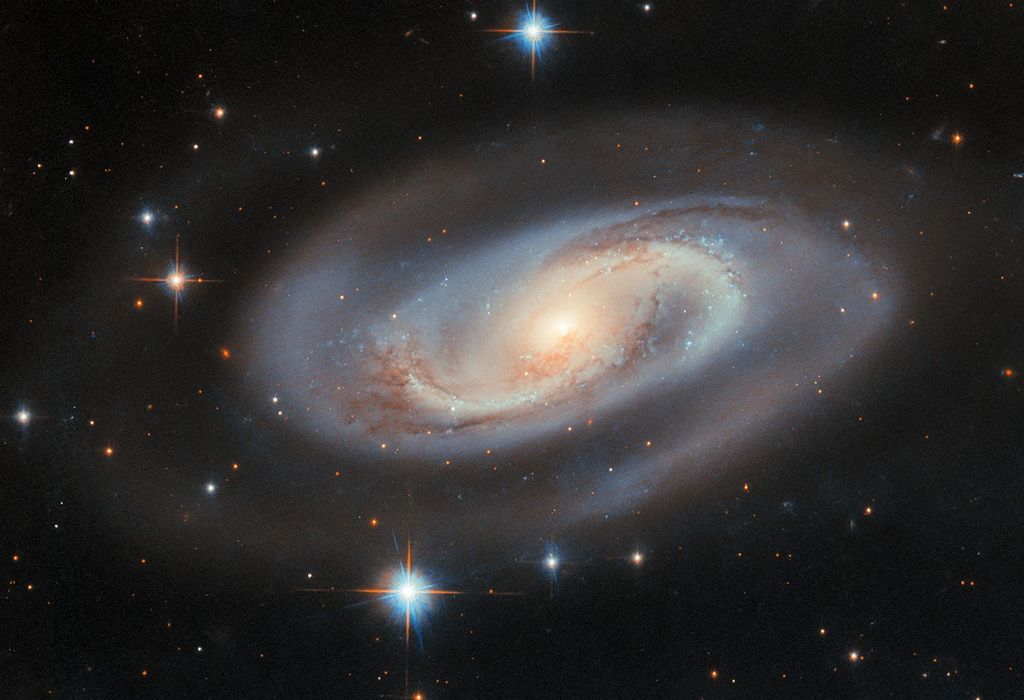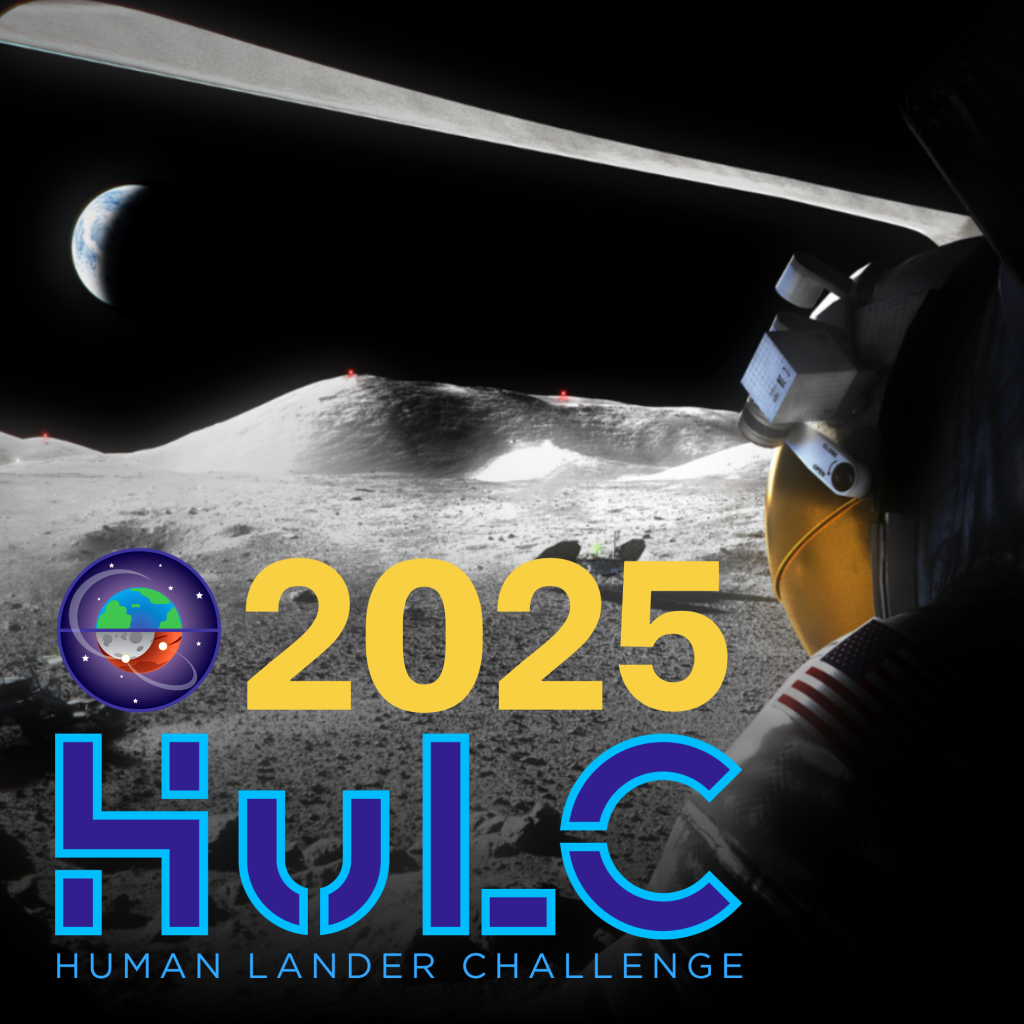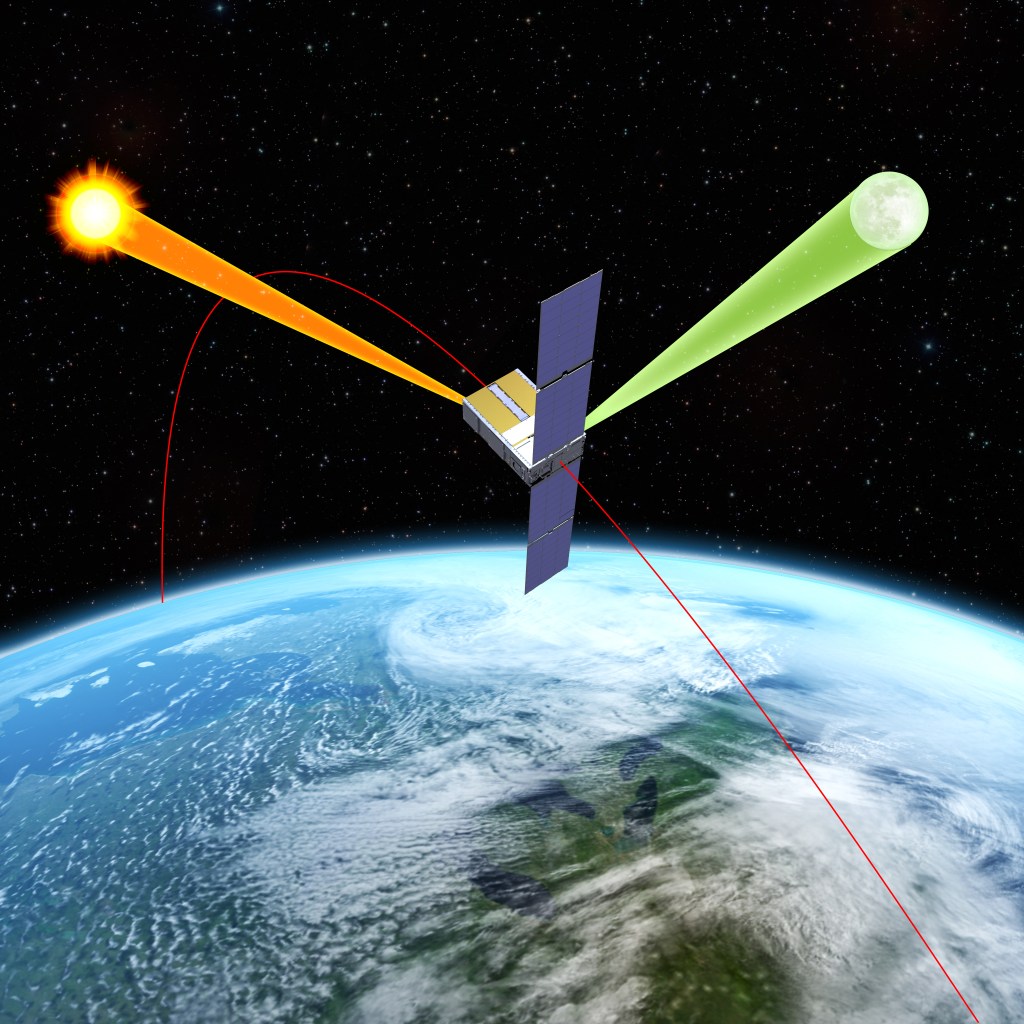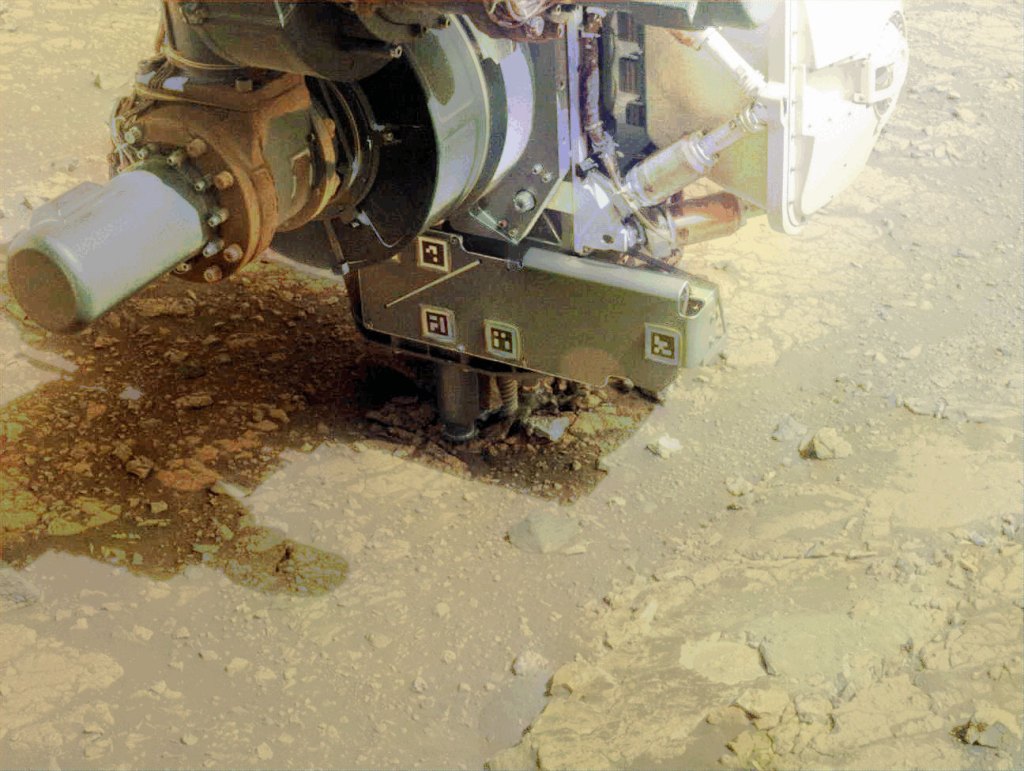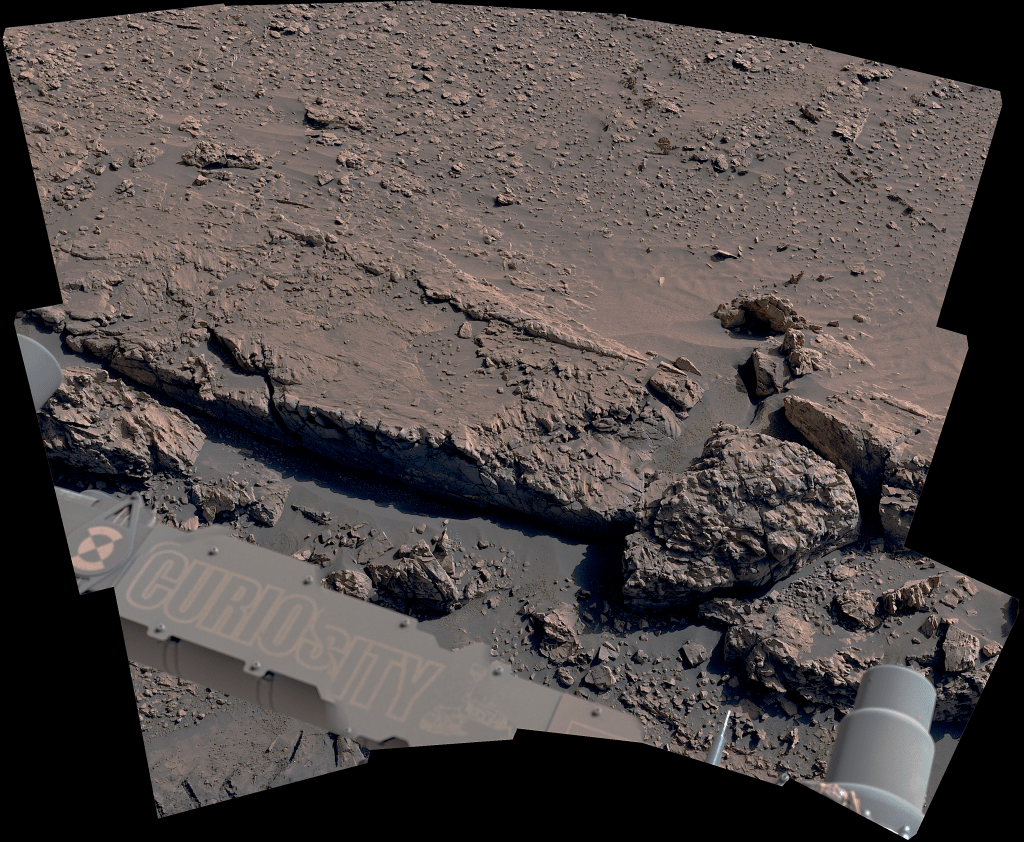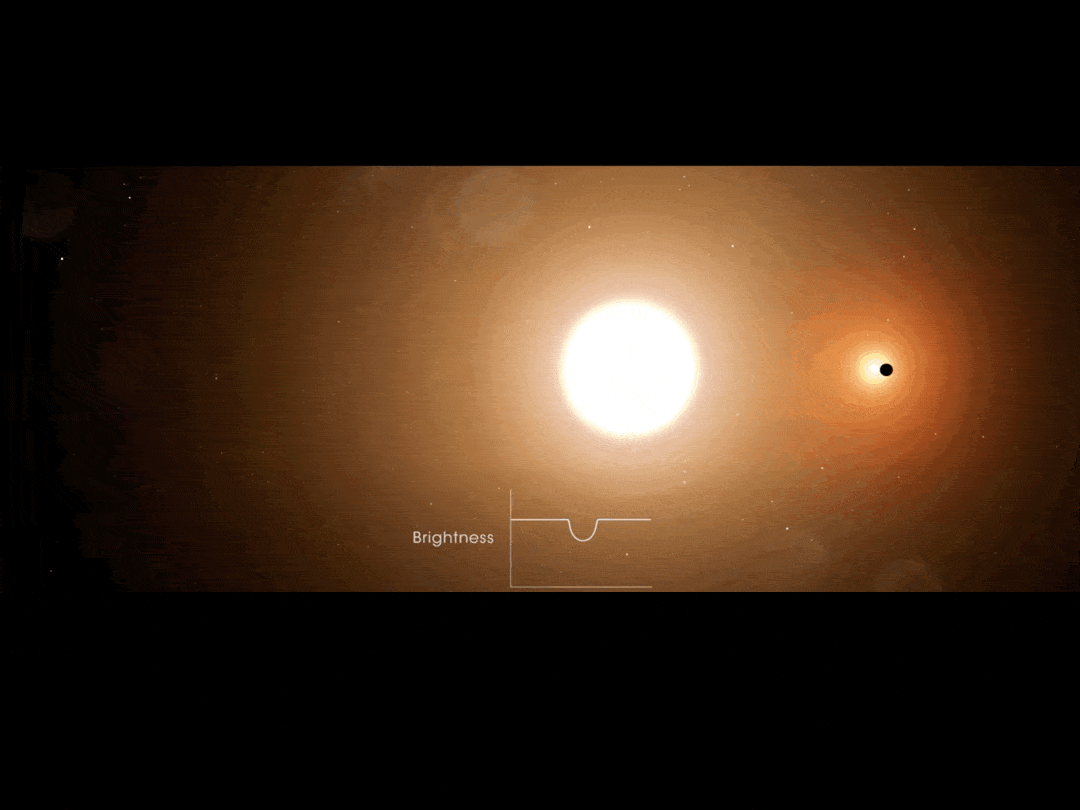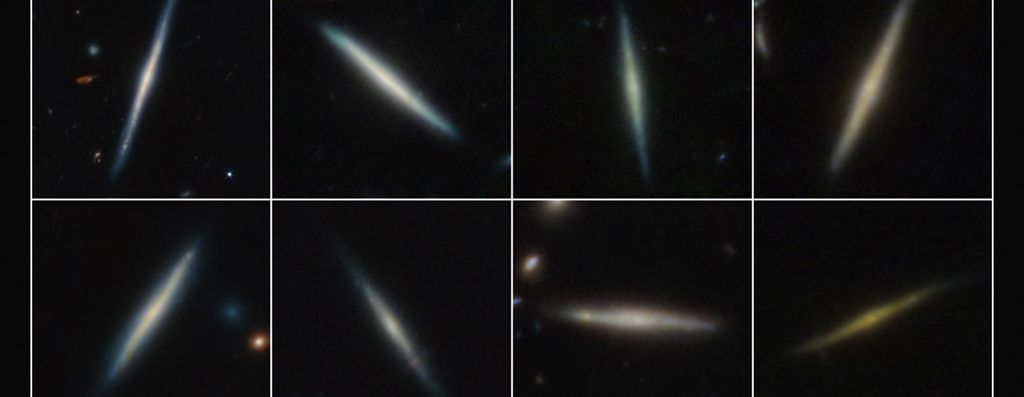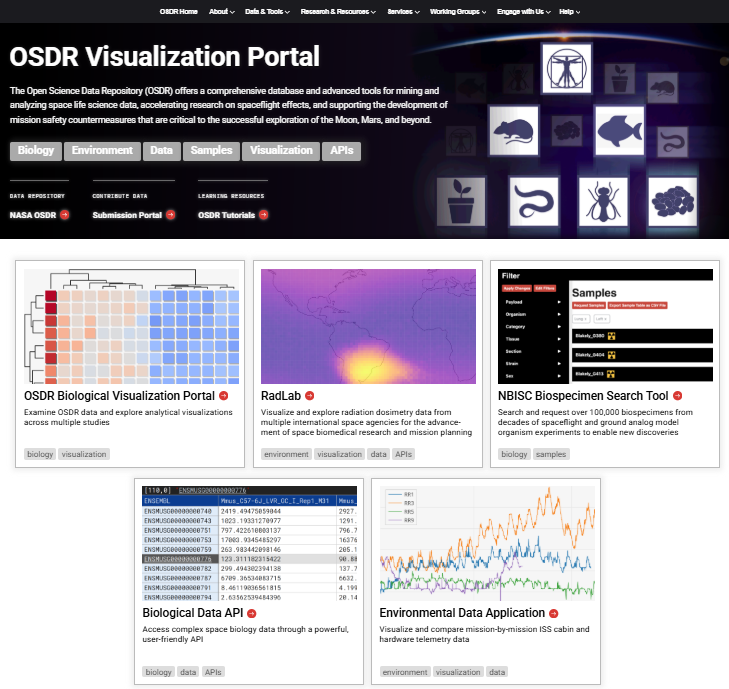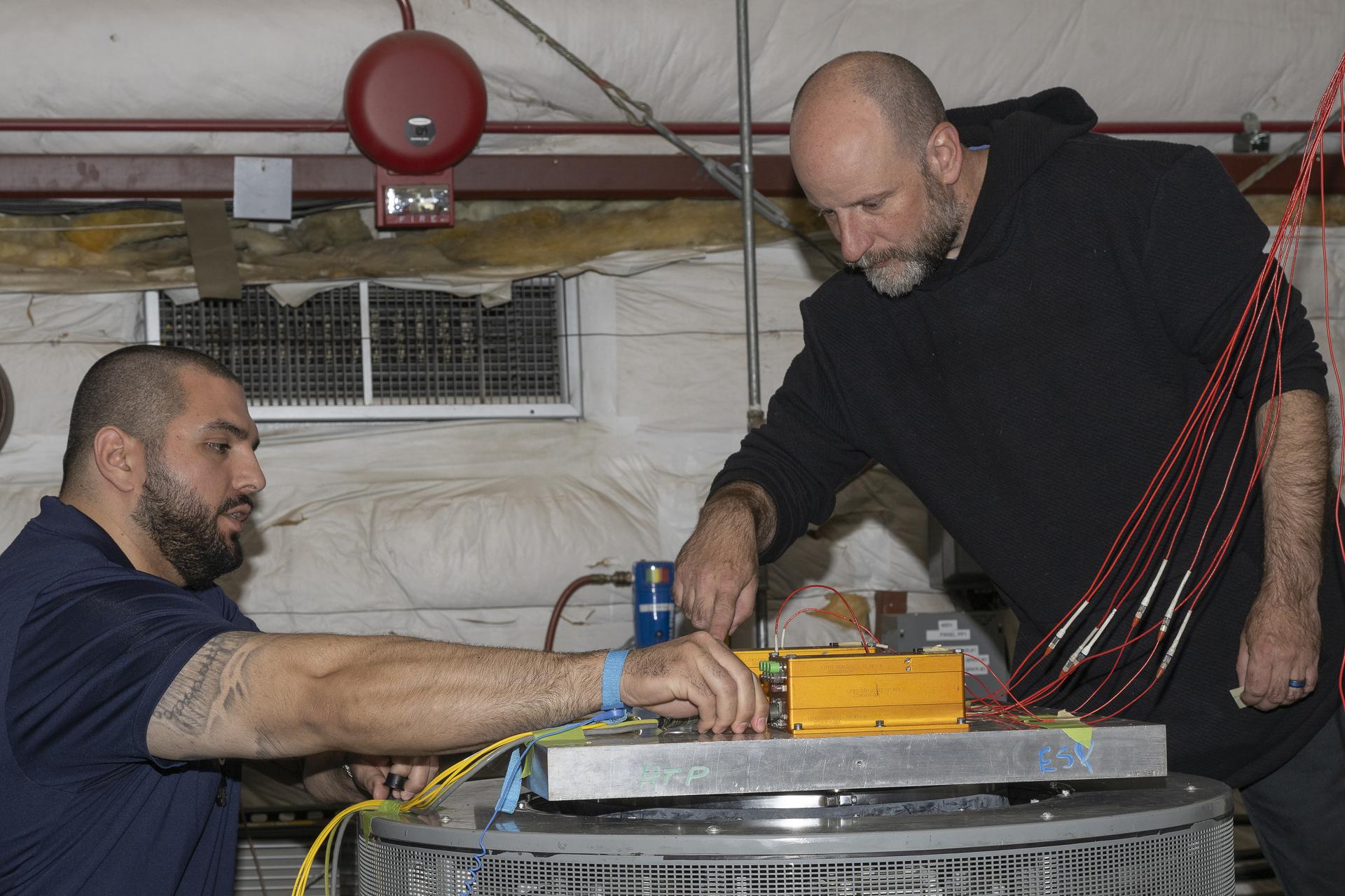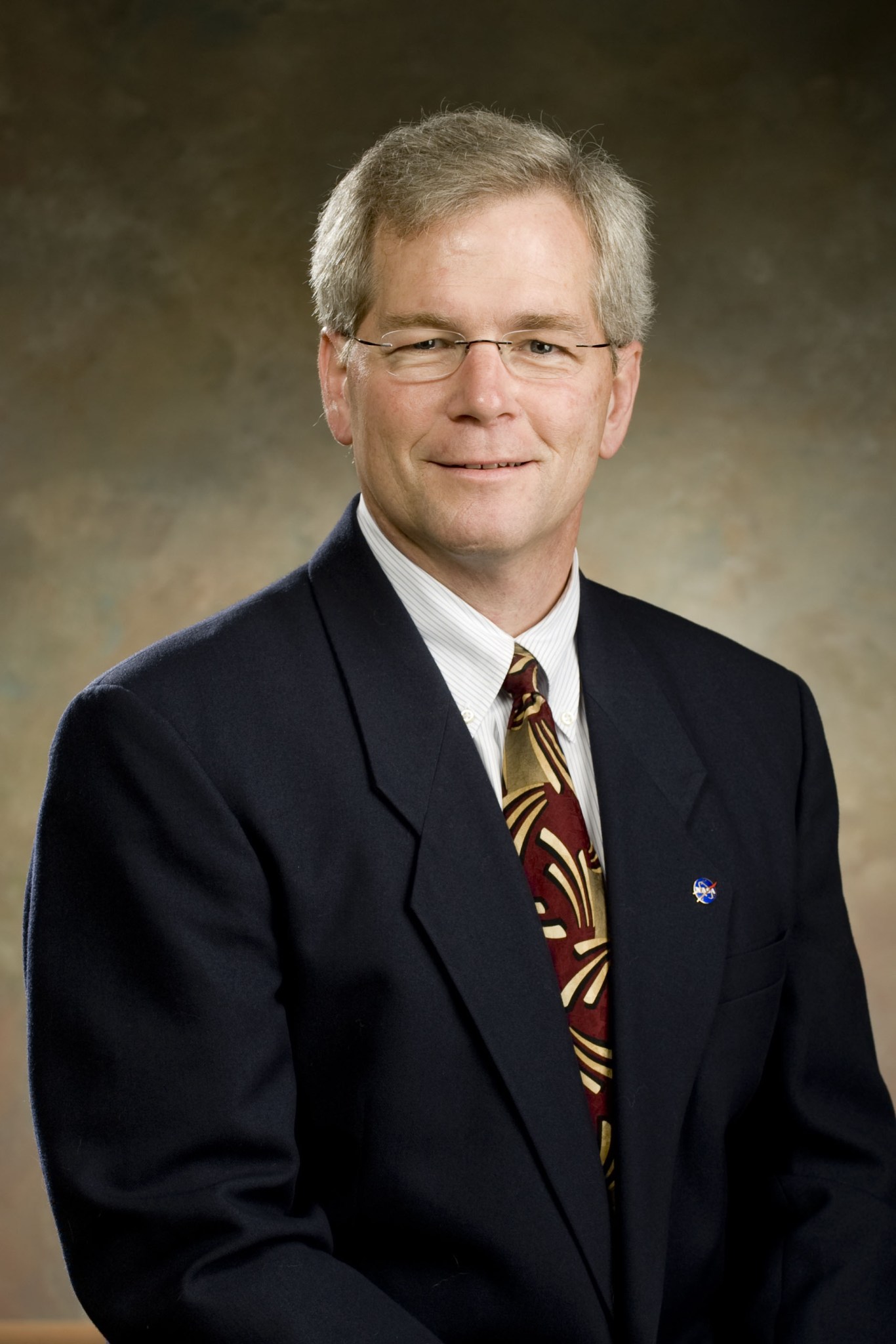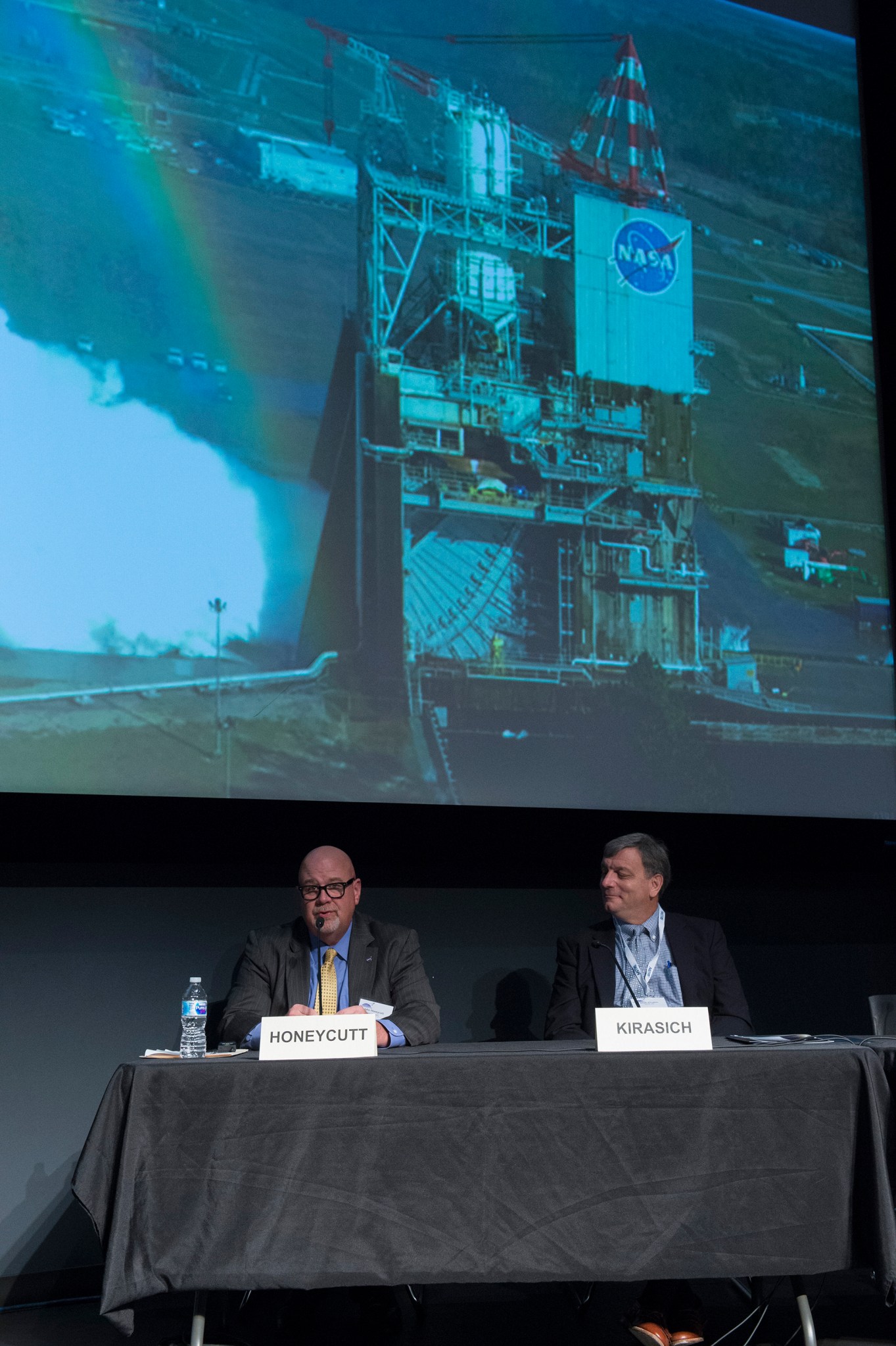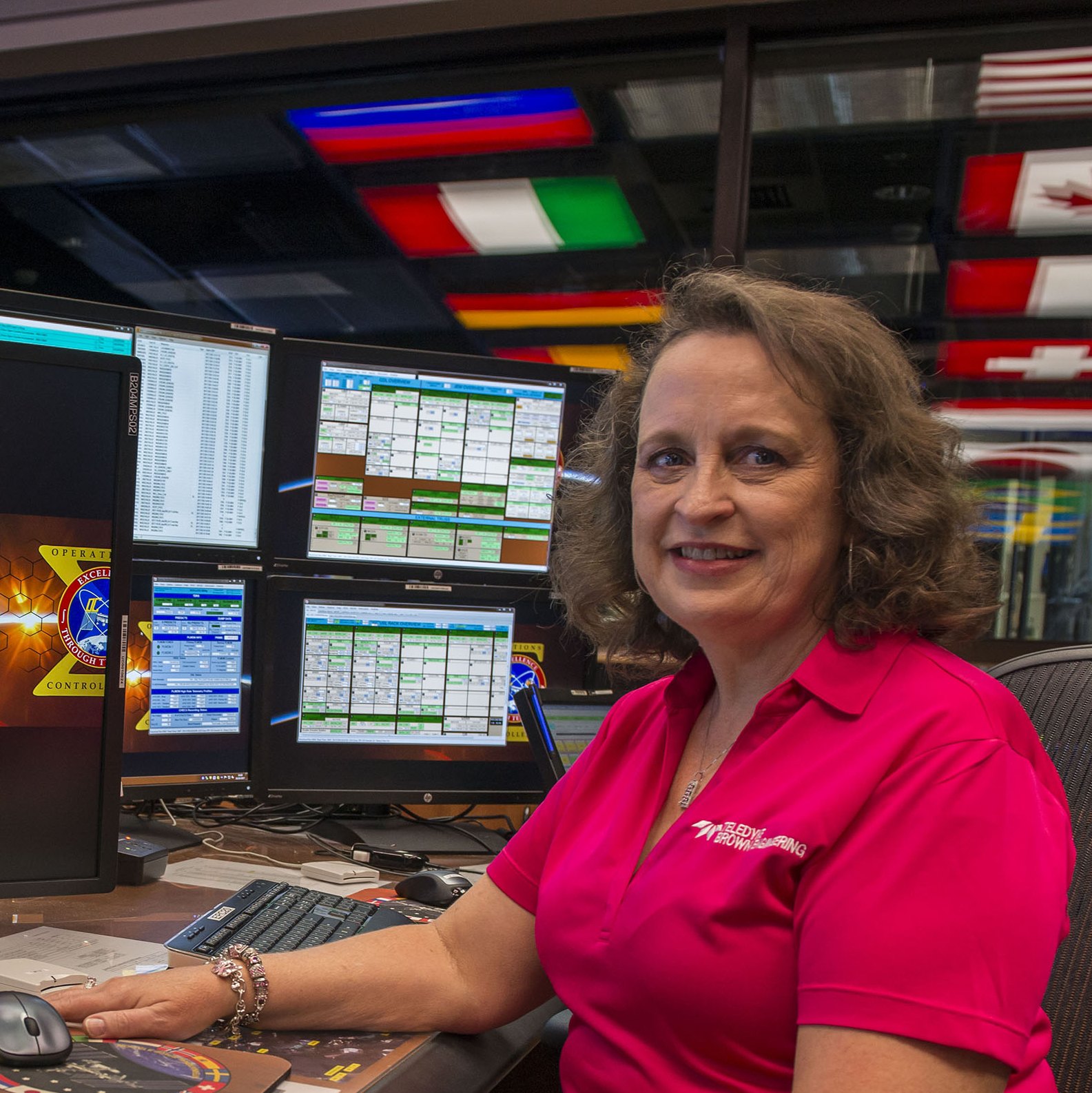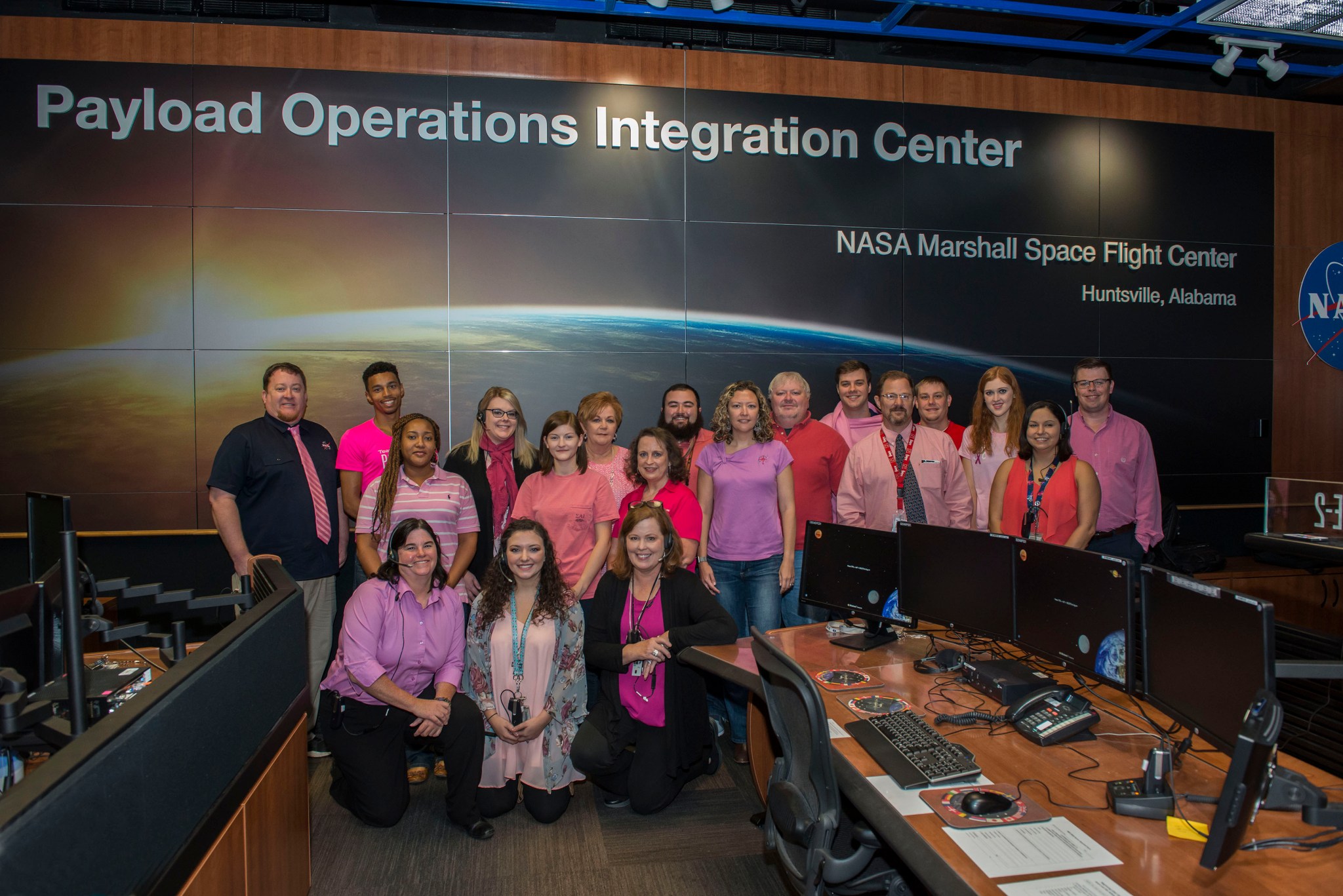In This Week’s Star
- Steve Doering Named Senior Executive for Technology and Integration
- Annual Wernher von Braun Symposium Brings Together NASA and Industry Space Policy Leaders
- When it Comes to Health, Connie Whitley Advises Women to Be Proactive
- Marshall Celebrates International Observe the Moon Night
- CFC Kickoff Event Scheduled for Nov. 9
- Scientists, Researchers Gather in Huntsville to Plan Space Station Science
- Marshall Center Director Todd May named Engineering Manager of the Year
- This Week in NASA History: STS-61A Launches – Oct. 30, 1985
- Dawn Mission Highlighted on ‘This Week @NASA’
- Obituaries
Steve Doering Named Senior Executive for Technology and Integration
Steve Doering has been named to the newly created position of senior executive for Technology and Integration at NASA’s Marshall Space Flight Center.
“As we continue efforts to carry out NASA’s bold and ambitious mission for a sustainable program of exploration and innovation, we are at a historic crossroad in human spaceflight,” said Marshall Center Director Todd May. “We are in a cadence of accountability in operating the International Space Station; implementing Exploration Systems Development cross-program activities; and completing the design, development and integration of the Space Launch System as we move toward the initial Exploration Mission launch date. In parallel, there is a need to mature deep-space human exploration concepts, technology and proof of concepts to enable those missions. This new position is being created in response to those needs at the center.”
Doering will report directly to the Marshall director, playing an integral role as the Marshall liaison to the recently established agency architectural concept team, whose role is to leverage and prioritize architectural efforts linking back to space station, SLS and the deep-space concept efforts. In addition, Doering will provide crucial insight and support to Paul McConnaughey in the technical oversight of Marshall’s technology development initiatives, ensuring they attain preeminence in designated core technology competency areas.
Doering has supported human spaceflight in a variety of positions as both a contractor and civil servant. He has served as manager of the SLS Stages Office since 2015, responsible for all facets of the SLS Core Stage, the backbone of the SLS and the largest rocket stage ever manufactured. Julie Bassler will manage the day-to-day operations of the SLS Core Stage office until a permanent replacement is named.
Between 1986 and 1989, Doering worked for Booz Allen Hamilton of Mclean, Virginia, and Hernandez Engineering of San Francisco, California, supporting the Space Station Freedom Program and the Space Lab 2 Mission, a joint mission with the German Space Agency.
Prior to his tenure at Marshall, Doering served at Johnson Space Center from 1989 to 2008 in various capacities including manager of the Extravehicular Activity Office with responsibility for oversight of the entire range of program, personnel and business activities related to spacewalking for NASA.
He joined Marshall in 2008 and served as associate program manager for the Constellation Program until 2011, where he led all of Marshall’s Constellation Program efforts. Between 2011 and 2012, he was director of NASA’s Michoud Assembly Facility where development of the SLS and Orion spacecraft is underway. In 2012, Doering was named director of Marshall’s Office of Center Operations, the organization responsible for providing services including environmental engineering and occupational health, facility management and operations, logistics and transportation, protective services, and subordinate site operations.
Doering’s new assignment became effective Oct. 30.
Annual Wernher von Braun Symposium Brings Together NASA and Industry Space Policy Leaders
By Joel Wallace
The aerospace community gathered Oct. 24-26 for the 10th Annual Wernher von Braun Symposium at the University of Alabama in Huntsville. The three-day symposium brought together experts for discussion panels on science, engineering and technology under the theme “Gateways in Space: Exploration, Security, and Commerce.”
“There are few platforms that bring together such a good cross-section of people from institutions and industries that are shaping America’s future in space,” said Todd May, director of NASA’s Marshall Space Flight Center.
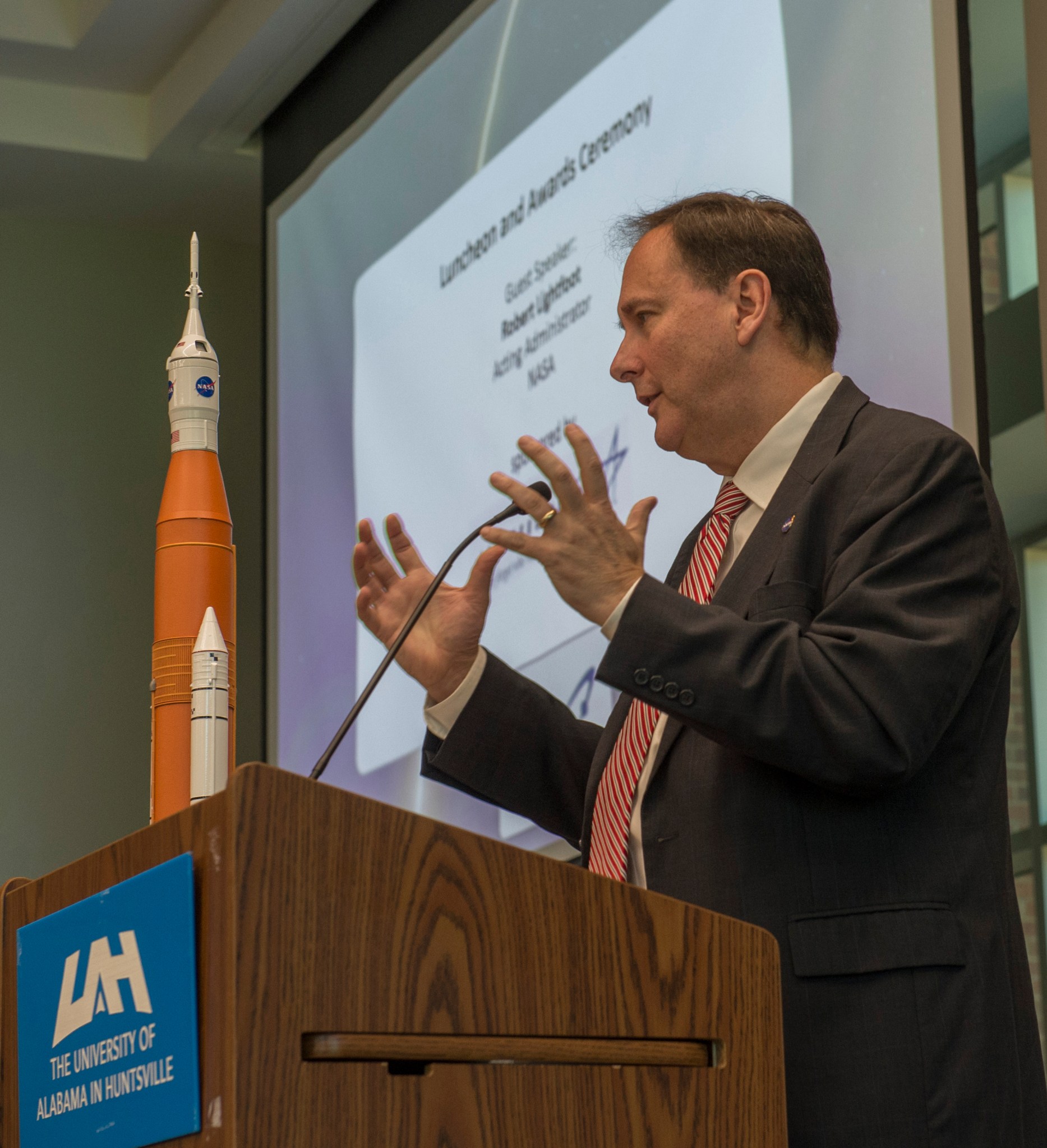
May opened up this year’s symposium Oct. 25 with an address highlighting Marshall’s diverse past, present and future programs and achievements, emphasizing the scale and impact of human spaceflight and the technological innovation and new scientific discoveries it enables.
“Imagine that moment when NASA’s Space Launch System is on a pad at Kennedy Space Center preparing for lift-off,” May said. “The world will be watching, and the United States will be leading by inspiration…by the dreams of what we will do and discover in the years ahead.”
Acting NASA Administrator Robert Lightfoot, the luncheon guest speaker on Oct. 26, emphasized the importance of understanding the obstacles and balancing the risks inherent in NASA’s human exploration mission.
“We must act with a sense of urgency and continue that urgency while understanding the important balance and historic challenges we face,” said Lightfoot. He also shared perspectives on the newly reestablished National Space Council chaired by Vice President Mike Pence, noting the high priority the administration places on space exploration. The administration directed NASA to develop a plan for an innovative and sustainable program of exploration with commercial and international partners to enable human expansion across the solar system, returning humans to the Moon for long-term exploration and utilization, followed by human missions to Mars and other destinations.
“SLS and Orion are the backbone of any plan going forward,” Lightfoot concluded. “I’m proud about the work we have accomplished and excited about what we are going to accomplish.”
William Gerstenmaier, associate administrator, Human Exploration and Operations at NASA Headquarters, shared an overview of NASA programs that are in the scope of human space exploration during his remarks. He discussed the vast landscape of NASA’s human space exploration missions and showed his love for the practical side of NASA’s work. “I’m always excited to see real hardware and speak with real engineers. That’s why I’m always glad to visit Marshall.”
Other Marshall speakers and panelists at this year’s symposium included Bobby Watkins, director of the Human Exploration Development and Operations Office; David Burns, director of the Science & Technology Office; and John Honeycutt, Space Launch System program manager.
The symposium was hosted by the American Astronautical Society and organized in conjunction with the University of Alabama in Huntsville, the Huntsville National Space Club and the Marshall Center.
When it Comes to Health, Connie Whitley Advises Women to Be Proactive
By Morgan MacMillan
Many people at NASA Marshall Space Flight Center’s Payload Operations Integration Center know Connie Whitley, a payload operations data file support specialist for the International Space Station. But few know of her fight with breast cancer.
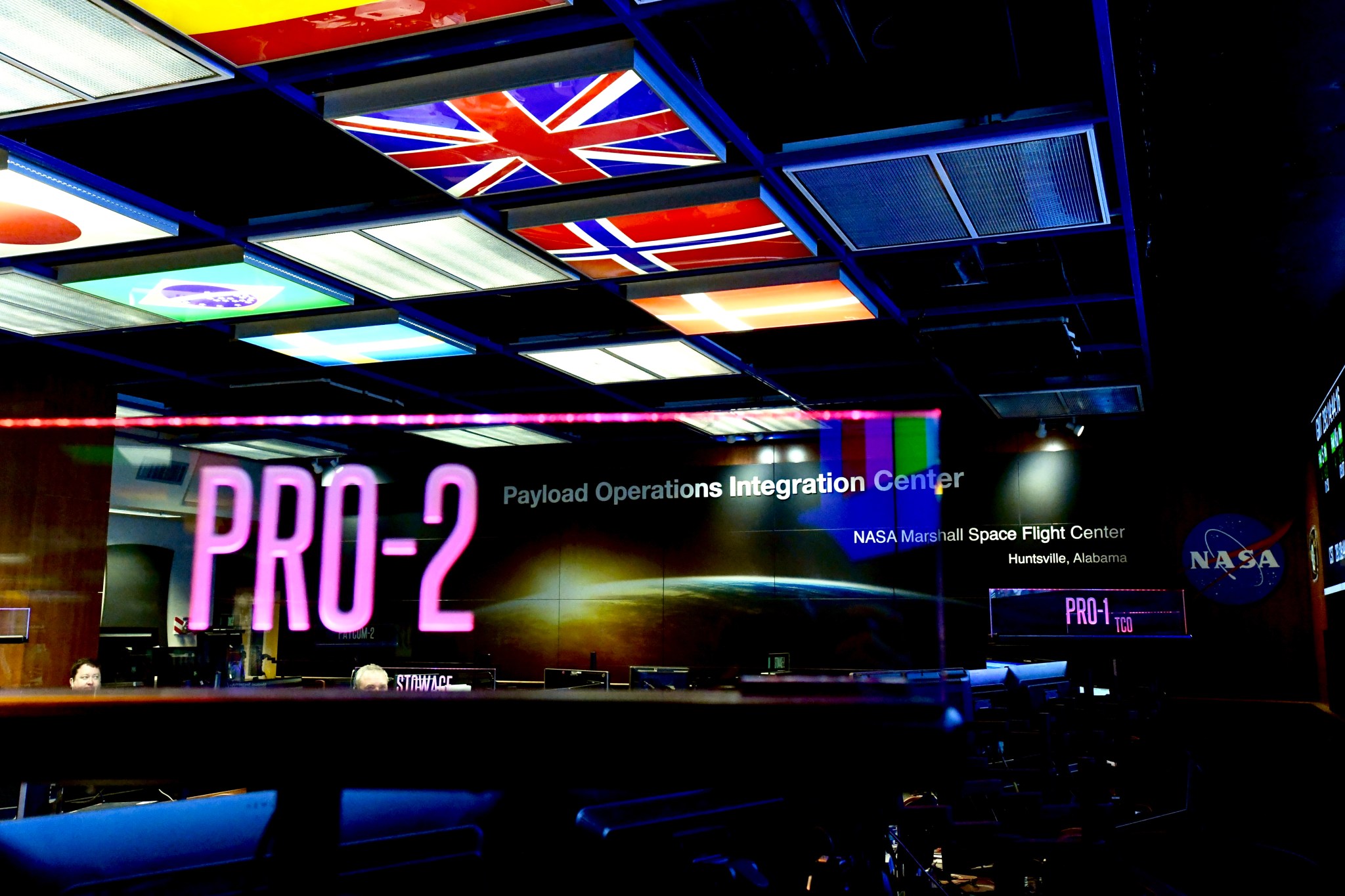
In the fall of 2011, Whitley discovered a raised abnormal spot, a ridge, on one of her breasts. A couple of months later, during her yearly exam, her doctor explained the ridge was probably nothing to worry about.
Whitley could have let it go, but when she followed up with her yearly mammogram, she told the technician that something felt different, even though the ridge had disappeared. That one statement may have saved Whitley’s life.
After having several images taken and tests conducted, Whitley knew it was a bad sign when her doctor performed the third ultrasound himself. He reasoned that whatever the spot was, it was so undefined that he couldn’t say whether there was cause for worry yet. When the biopsy revealed she did indeed have breast cancer, the diagnosis was anything but routine.
“After the initial discussion, I asked the doctor what he saw on my mammogram and he told me absolutely nothing,” Whitley explained. “If I hadn’t said that something felt different, they would’ve looked no further. Knowing that the unusual ridge had disappeared, I could have just kept quiet; the tumor would have continued to grow.”
Whitley met with a local surgeon who agreed her ultrasound pictures showed something so unusual, he wasn’t sure what he was looking at. Only after an MRI did doctors discover her tumor was almost 3 inches wide.
“I was in shock,” Whitley explained. “How could this be?”
The next month, she started an aggressive treatment plan that involved 20 weeks of chemotherapy at Clearview Cancer Institute in Huntsville, before having a bilateral mastectomy to remove any trace of cancerous tissue.
“I had lots of support during my diagnoses and treatment,” Whitley said. “Of course, from my family and church family, but also from my work family. I never had to ask twice if I needed someone to cover for me, and they were always there to support me emotionally. Coworkers who had gone through cancer even spoke up and held my hand through the whole process.”
Whitley’s message for women is that you have to be in charge of your own health, because it may be what saves your life.
“I’m not crazy about sharing my story, but I know that it’s an important story to tell,” she admitted. “My tumor was one that invaded my tissue, so it wasn’t just one lump. I had a tumor that couldn’t be felt. You have to listen to your own body.”
For more information on breast cancer screenings and awareness, click here.
MacMillan, an ASRC Federal/Analytical Services employee, supports the Office of Strategic Analysis & Communications.
Marshall Celebrates International Observe the Moon Night
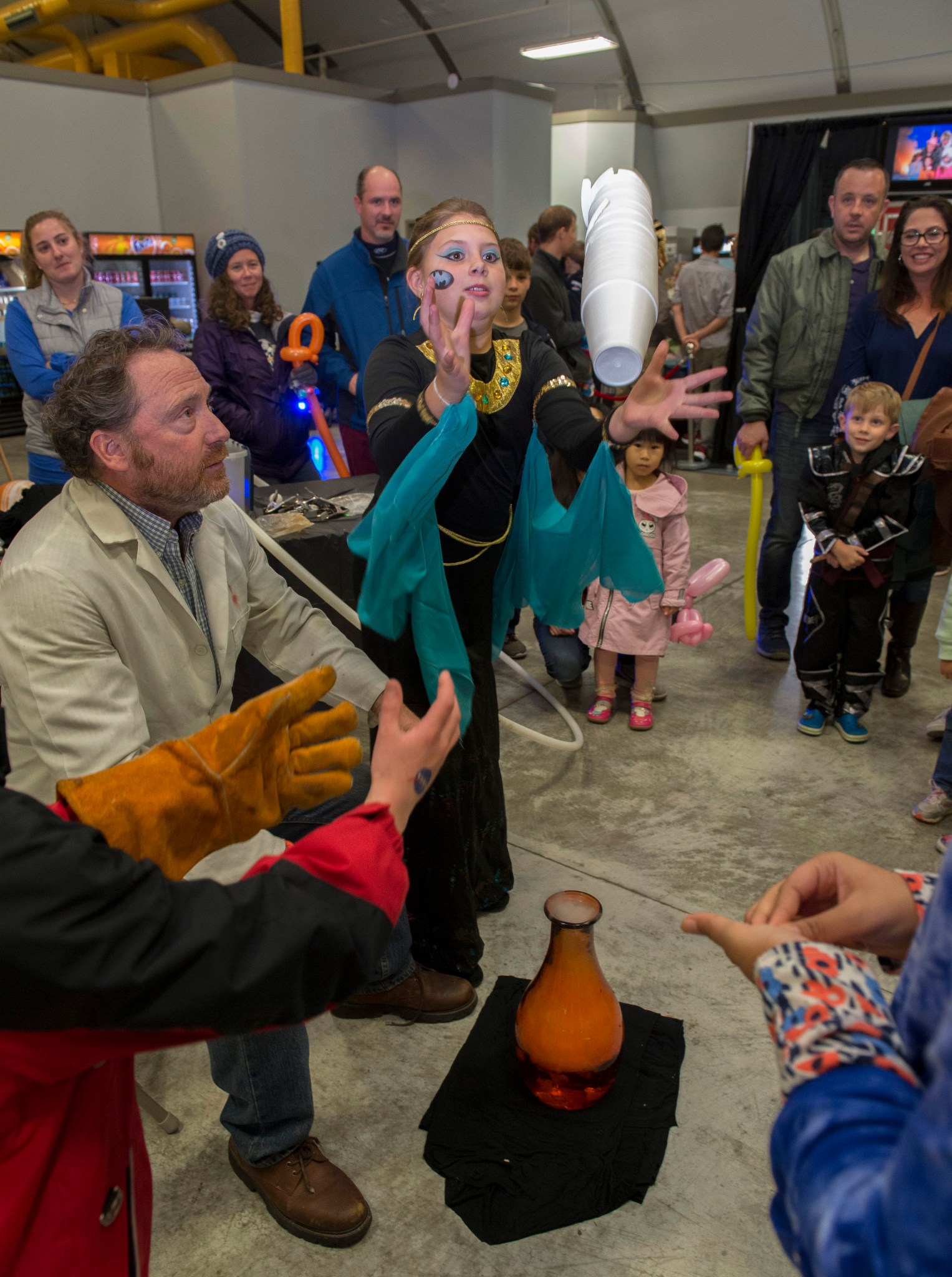
A volunteer assists an eager participant at International Observe the Moon Night Oct. 28 at the U.S. Space & Rocket Center. The event, hosted by the Planetary Missions Program at NASA’s Marshall Space Flight Center, encourages observation and appreciation of the Moon and its connection to NASA planetary science and exploration, as well as our cultural and personal connections to it. Children attending the event had the opportunity to participate in planetary, science-based, hands-on activities. (NASA/Emmett Given)
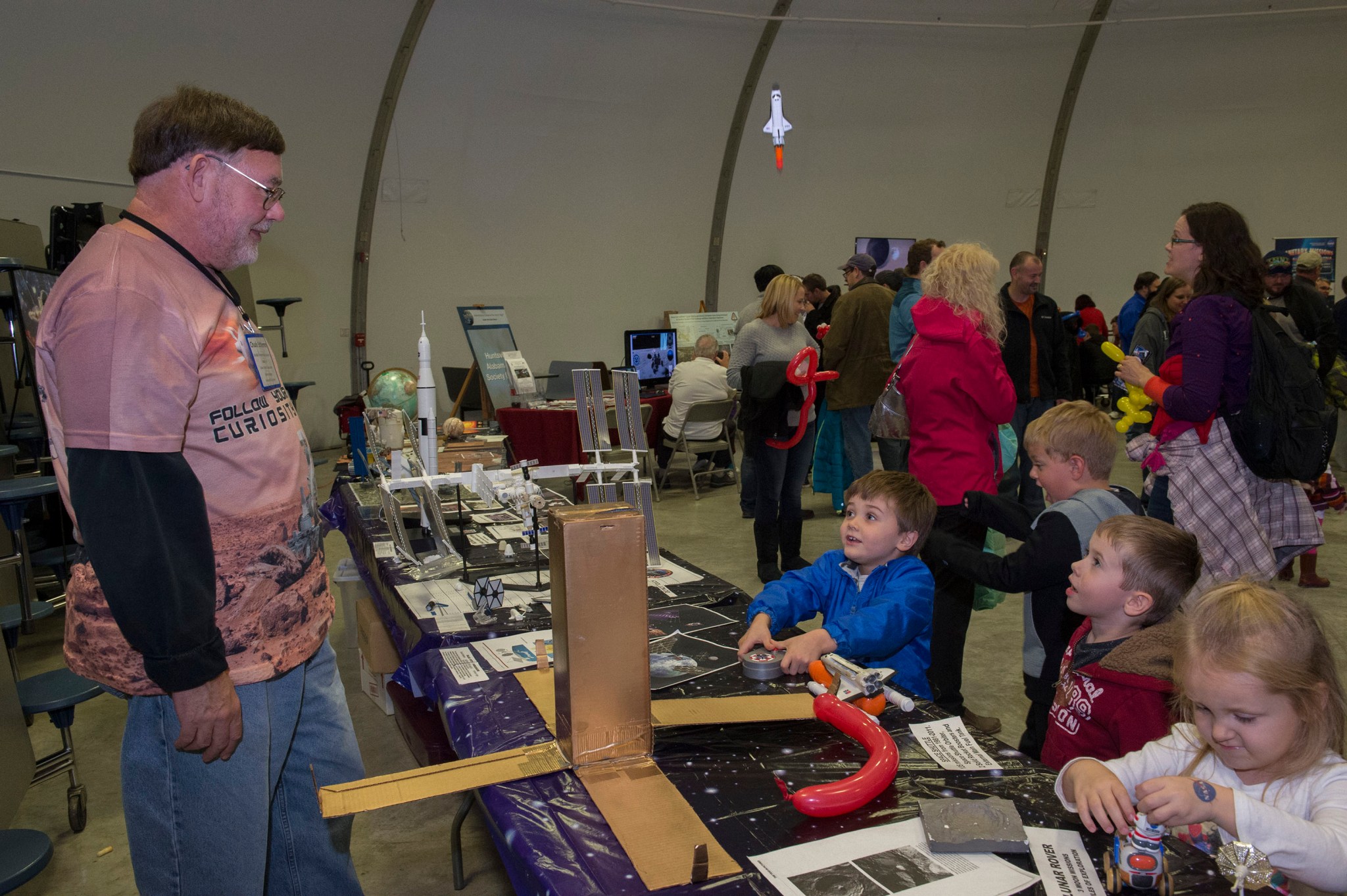
A group of children participate in an exhibit at the U.S. Space & Rocket Center Oct. 28 as part of International Observe the Moon Night festivities. Each year, thousands of people participate in International Observe the Moon Night events around the world. Marshall celebrated the occasion at the museum with family friendly activities, NASA planetary scientists and hands-on exhibits. (NASA/Emmett Given)
CFC Kickoff Event Scheduled for Nov. 9
By Jonathan Deal
The 2017 Tennessee Valley Combined Federal Campaign is gearing up for its annual goodwill drive with a kickoff event Nov. 9 from 12:30-3:30 p.m. in Building 4316. All NASA Marshall Space Flight Center team members are invited to attend.
The event will highlight this year’s campaign theme, “Show Some Love,” and will include remarks by Loucious Hires, director of the Office of Diversity and Equal Opportunity at Marshall. A charity fair, showcasing 41 local, non-profit organizations, will provide an opportunity for participants to learn about charities that benefit from the Combined Federal Campaign, also known as CFC.
Before the Nov. 9 kickoff, volunteers may attend one of two training sessions for key CFC workers and organizational leads. The training sessions are Nov. 3 from 1-2 p.m. in Building 4200’s Room P110, and Nov. 6 from 11:30 a.m.-12:30 p.m. in Building 4203’s Room 1201.
Deal, an ASRC Federal/Analytical Services employee and the Marshall Star editor, supports the Office of Strategic Analysis & Communications.
Scientists, Researchers Gather in Huntsville to Plan Space Station Science
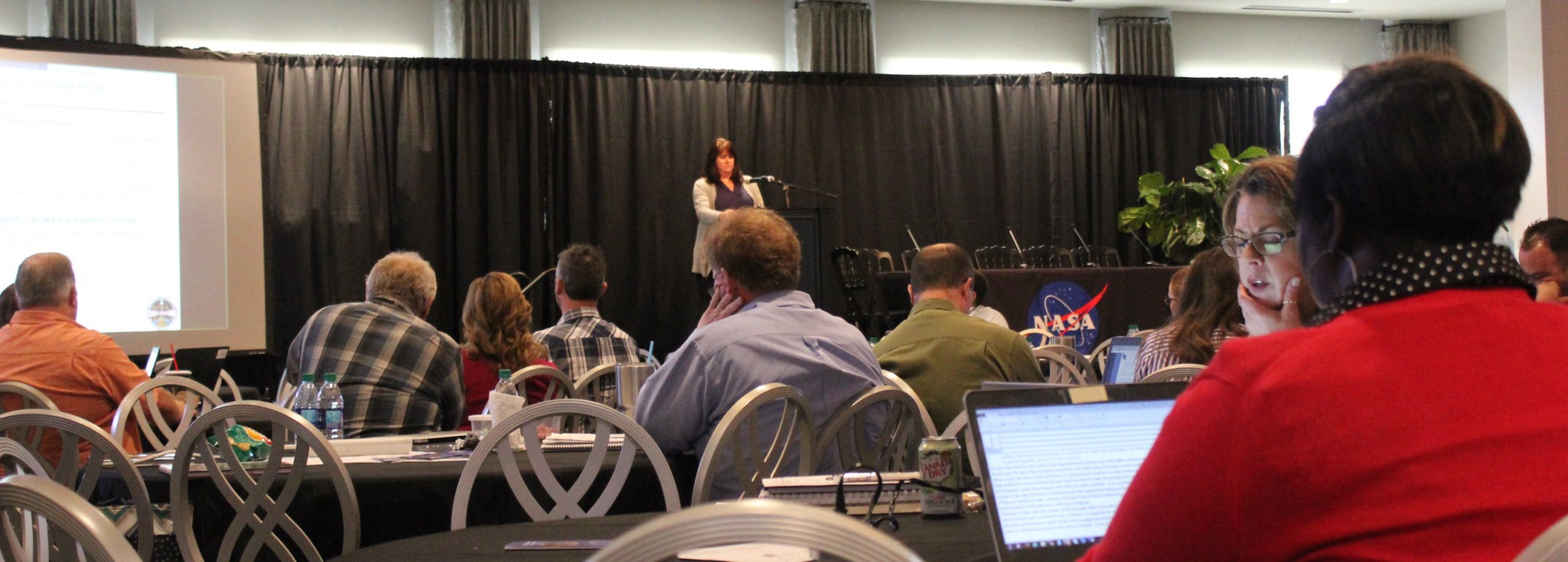
Dozens of scientists and engineers from around the world join NASA team members at the annual Payload Operations Integration Working Group meeting Oct. 17-19. The event gives payload developers, investigators and project managers the opportunity to coordinate processes and schedules and to review the status of scientific payloads currently on or soon launching to the International Space Station. The gathering, hosted by NASA Marshall’s Payload Operations Integration Center, was held at the Huntsville Botanical Garden. The POIC is mission control for science on the International Space Station. (NASA/MSFC/Brian C. Massey)
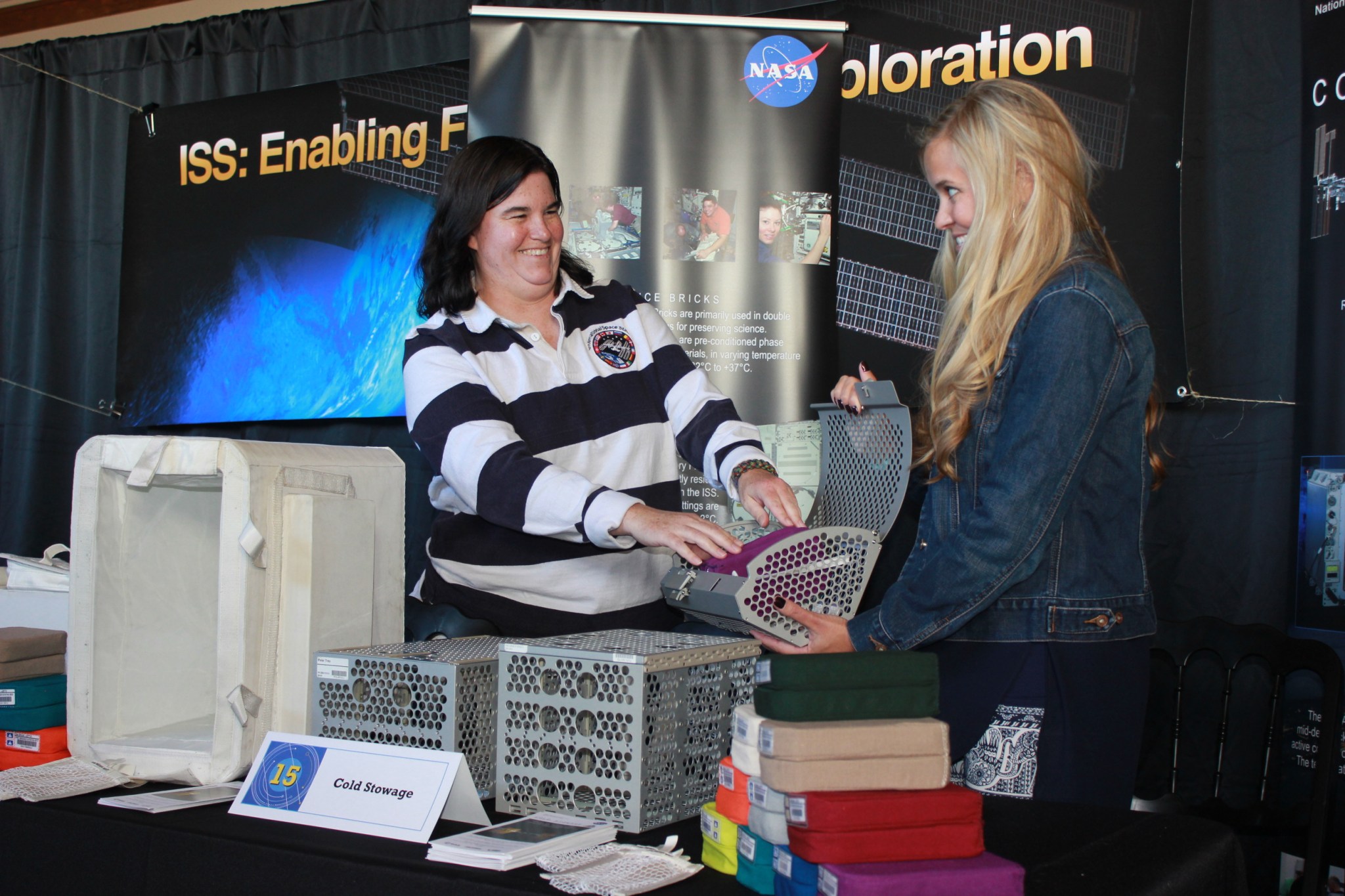
Penny Pettigrew, left, a payload communications manager, and Jennifer McMillian, an operations controller at Marshall’s Payload Operations Integration Center, showcase ice bricks for the International Space Station’s Cold Stowage Project. Cold stowage provides temperatures as low as minus 250 degrees Fahrenheit for space station science payloads. The cold stowage demonstration was one of many exhibit booths highlighting space station tools, services and opportunities for science and engineers interested in conducting science in orbit. (NASA/MSFC/Brian C. Massey)
Marshall Center Director Todd May named Engineering Manager of the Year

Frances Alston, left, president of the American Society for Engineering Management, presents NASA Marshall Space Flight Center Director Todd May with the Engineering Manager of the Year Award Oct. 20 at the 2017 International Annual Conference of the American Society for Engineering Management. May accepted the award and provided the keynote speech at the conference’s awards dinner, held at the Marriott Hotel in Huntsville. The annual conference, hosted by the University of Alabama in Huntsville, was held Oct. 18-21 and featured an industry roundtable and tours of local industries. (NASA/MSFC)
This Week in NASA History: STS-61A Launches – Oct. 30, 1985
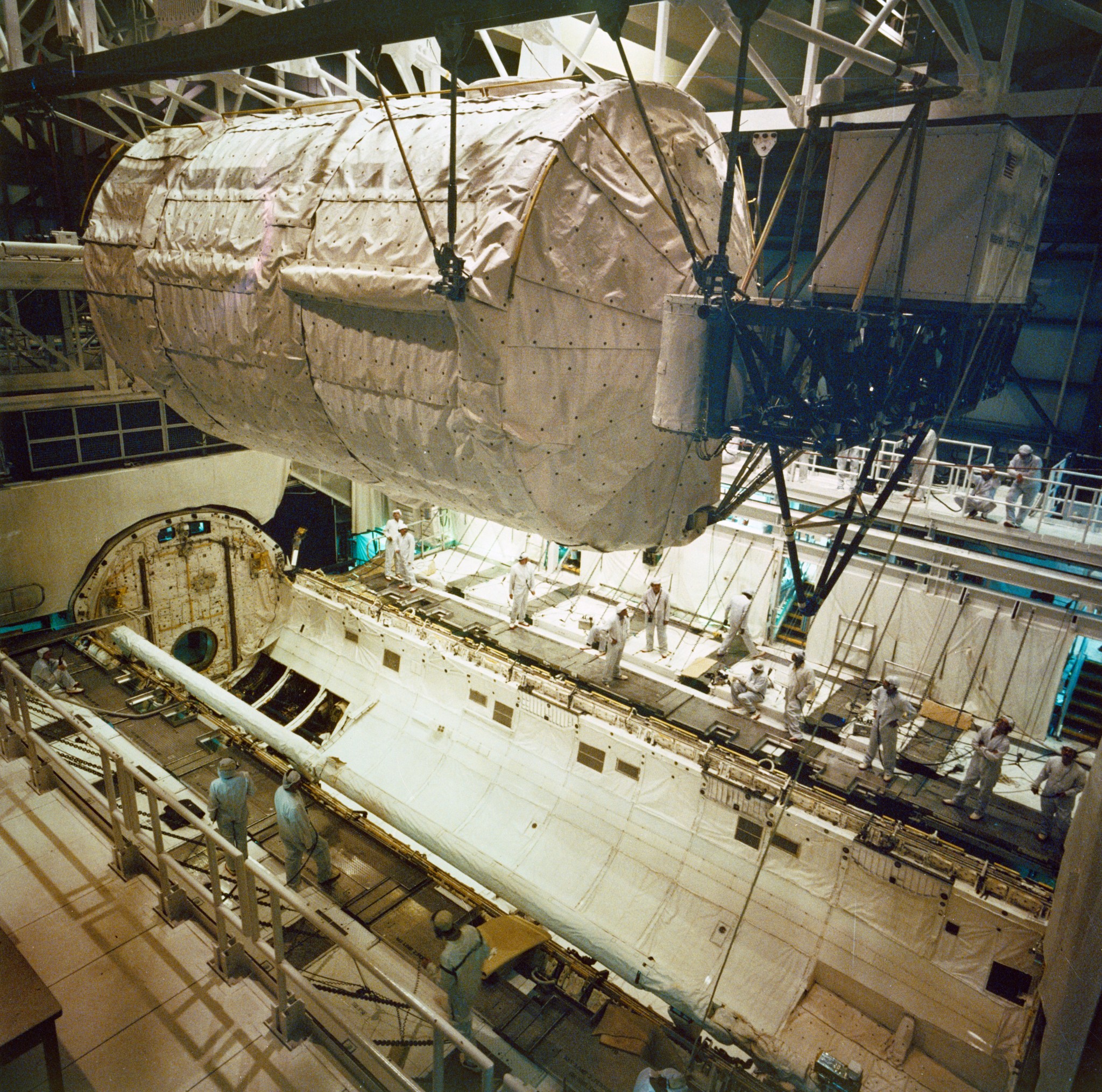
This week in 1985, the space shuttle Challenger launched for the STS-61A mission from NASA’s Kennedy Space Center. It carried the D-1 Spacelab mission — the first with German mission management and controlled from the German Space Operations Center. The Spacelab was conducted in a long module and featured 75 numbered experiments. Here, the first payload is installed into the orbiter’s cargo bay in the Orbiter Processing Facility at Kennedy. The Spacelab module was designed, developed and managed by NASA’s Marshall Space Flight Center. Today, the Payload Operations Integration Center at Marshall serves as “science central” for the space station, working 24/7, 365 days a year in support of the orbiting laboratory’s scientific experiments. The NASA History Program is responsible for generating, disseminating and preserving NASA’s remarkable history and providing a comprehensive understanding of the institutional, cultural, social, political, economic, technological and scientific aspects of NASA’s activities in aeronautics and space. For more pictures like this one and to connect to NASA’s history, visit the Marshall History Program’s webpage. (NASA)
Dawn Mission Highlighted on ‘This Week @NASA’
Recent discoveries by NASA’s Dawn mission team are featured in the latest edition of “This Week @NASA,” a weekly video program broadcast nationwide on NASA-TV and posted online.
Two new studies from the Dawn mission suggest that a global ancient ocean existed on the dwarf planet Ceres — and shed light on what might have happened to it. One study indicates that most of the ancient ocean can be found in Ceres’ crust — which contains a mixture of ice, salts and hydrated materials, subjected to past and possibly recent geologic activity. The second study suggests residual liquid from the ocean could lie in a softer layer below the dwarf planet’s rigid crust.
Dawn’s mission to Vesta and Ceres is managed by the Jet Propulsion Laboratory for NASA’s Science Mission Directorate in Washington. Dawn is a project of the directorate’s Discovery Program, managed by NASA’s Marshall Space Flight Center.
View this and previous episodes at “This Week @NASA” on NASA’s YouTube page.
Obituaries
Lois M. Robertson, 87, of Huntsville, died Oct. 22. She retired from the Marshall Center in 1986 as an administrative officer.
Sandra O. Dickerson, 75, of Huntsville, died Oct. 29. She retired from the Marshall Center in 2002 as a human resources specialist.

